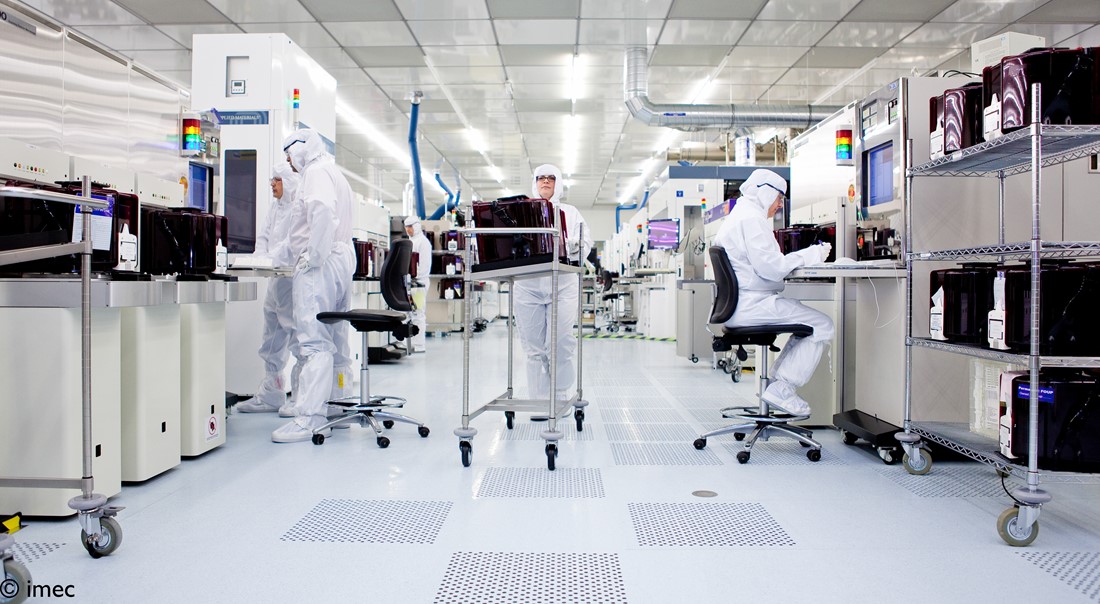Wafer-scale System Integration
Graphene meets silicon wafers
The aim of the Wafer-scale Integration Work Package is to bring graphene integration maturity from the laboratory to semiconductor manufacturing plants, or “fabs”.
The last 10 years
The incorporation of graphene into electronic and photonic components can enhance their performance in terms of size, power and energy efficiency. It is also the next step to enabling graphene-based commercial products. However, integrating graphene into mature manufacturing processes within the semiconductor industry is not an easy undertaking.
The Work Package was established in Core 1 to address the integration challenges that hindered the successful implementation of graphene in industry, mainly focussing on the manufacture of electronic and photonic integrated devices. Over the course of eight years, the Work Package has made significant progress in improving the manufacturing and fabrication of graphene materials (including steps such as contacting, patterning and encapsulation). Efforts have also been made to enhance the wafers’ scale, which increased from 50 mm up to 200 mm, and the quality of graphene.
One of the great advantages of the Graphene Flagship for our Work Package has been the long-term collaborations between research institutes, universities and companies. This has enabled tremendous progress in our work. Through collaboration, researchers from academia and industry have been able to tackle and solve relevant problems and ultimately move one step closer to graphene industrialisation. It also built a European ecosystem around graphene and layered materials.
Last year’s progress
The Wafer-scale Integration Work Package’s efforts focused on Hall sensors as electronic components and electro-absorption modulators as photonic components.
In 2022, the researchers transferred 200 mm CVD graphene on a 300 mm waveguide containing wafers in imec’s 300 mm CMOS platform, achieving high uniformity and yield. The process met the semiconductor industry's metal contamination requirements for back-end-of-line, with a concentration of iron and copper contaminants lower than 1012 atoms/cm2 on 200 mm CVD graphene. Additionally, CVD graphene deposited on various substrates, such as aluminium oxide and silicon dioxide, showed improved charge carrier mobility values of 10,000 cm2/Vs.
Furthermore, the Work Package has developed graphene-enabled electro-absorption modulators with data-rate of 20 Gbps and high-speed photodetectors with data-rate up to 120 Gbps. These advances demonstrate the potential for energy-efficient photonic components using graphene technology.

Amaia Zurutuza, Work Package Leader
Europe can now demonstrate graphene-based wafer-scale photonic and electronic components, something that ten years ago was truly out of reach.”
Work Package Leader

A look inside imec’s cleanroom. Credit: imec
References
Wu, C. et al. CLEO: Science and Innovations. Optica Publishing Group, 2022. DOI: 10.1364/CLEO_SI.2022.SF4K.4
Reep, T. et al. IEEE Photonics Conference (IPC). IEEE, 2022.
Latest Articles

Stretching the Limits of Graphene with Robin Smeyers

2D-PL funded to further mature 2D material wafer-scale integration
Launched in October 2024, the Graphene Flagship’s 2D-Pilot Line (2D-PL) project aims to further strengthen the European ecosystem in the development of integration modules for photonics and electronics prototyping services.

The commercialisation of graphene electronics
Kari Hjelt and Henning Döscher of the Graphene Flagship, have collaborated on a new article published in Springer Nature Electronics titled: “The commercialisation of graphene electronics.”

GATEPOST project celebrates its first anniversary
All eight European partners in the GATEPOST project celebrated a particularly pleasing event at the last six-monthly meeting. The project, funded by the European Commission through Horizon Europe, the European Framework Programme for Research and Development, has an ambitious goal. The development and production of a new type of graphene-based chip is intended to turn existing computer technology and IT security upside down and revolutionise them," explained Dr Mindaugas Lukosius of IHP GmbH Leibniz Institute for Innovative Microelectronics and lead partner in the project.

Graphene and 2D materials in photonics: A revolutionary leap in technology
In the vast landscape of modern science and technology, graphene and two-dimensional materials (2DM) have emerged as game-changers, revolutionising industries with their remarkable properties and diverse applications. Among the myriad fields benefiting from their extraordinary characteristics, photonics stands out as one of the most promising domains. Photonics, the science and technology of generating, detecting and controlling photons, has found new avenues for innovation and advancement through the integration of graphene and 2D materials. In this article, we delve into the captivating realm of photonics and explore how graphene and 2D materials are reshaping its landscape, opening up unprecedented possibilities and paving the way for groundbreaking discoveries.

First photonic integrated GATEPOST chip
First major milestone achieved in the EU GATEPOST project: All eight European project partners from industry and science meet to discuss the progress of the project and reflect on the development work of the last six months.

